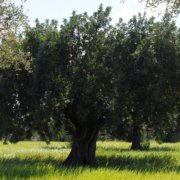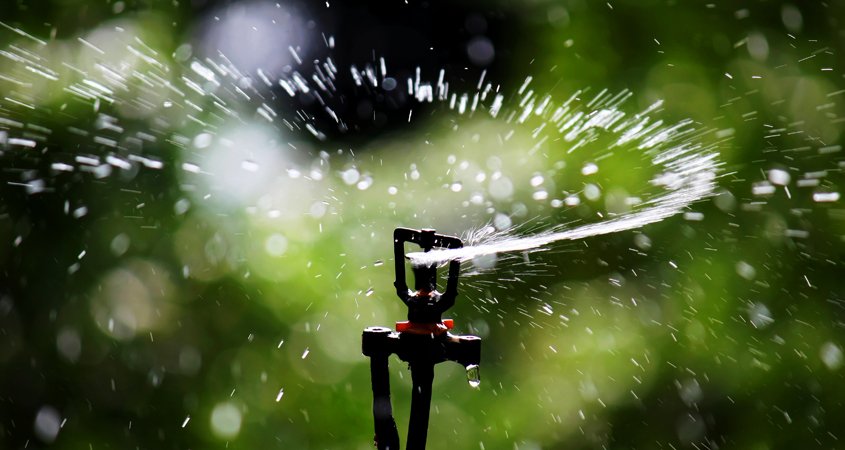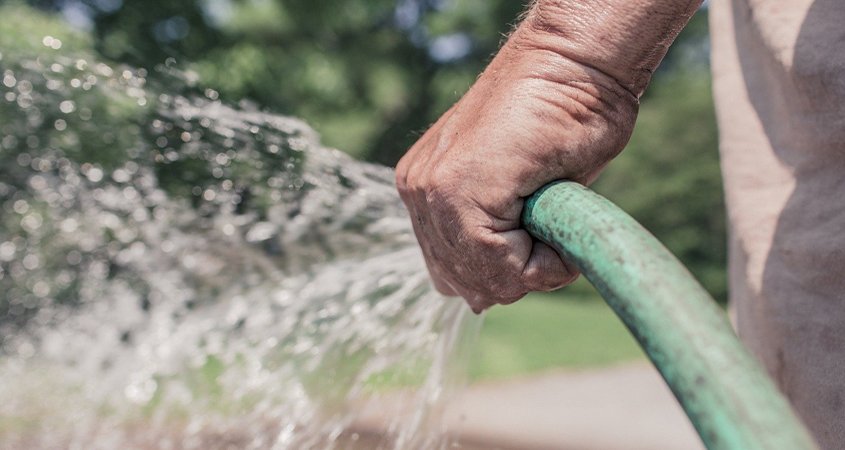Borrow Tree Watering Tips from Mother Nature
As drought continues to affect California, homeowners must balance two needs: preserving landscaping with irrigation while doing so as efficiently as possible to conserve water.
Even when not in a drought, trees planted in a Mediterranean climate often need additional water. For the most effective irrigation, mimic the way Mother Nature provides water.
Nature designed trees so rain would fall on the leaves and run off to the sides of the tree – much like rain hits an umbrella and rolls down off the side. It falls in a circle around the perimeter.
When irrigating trees, this same approach provides the most moisture to roots and maximizes water use. This outer edge around a tree where rain falls is called the drop line. This is where the tree sends out its most vigorous feeder roots to soak up available moisture. Using a hose to water at the trunk of trees doesn’t reach many of the roots.
Focus on slower, infrequent tree watering
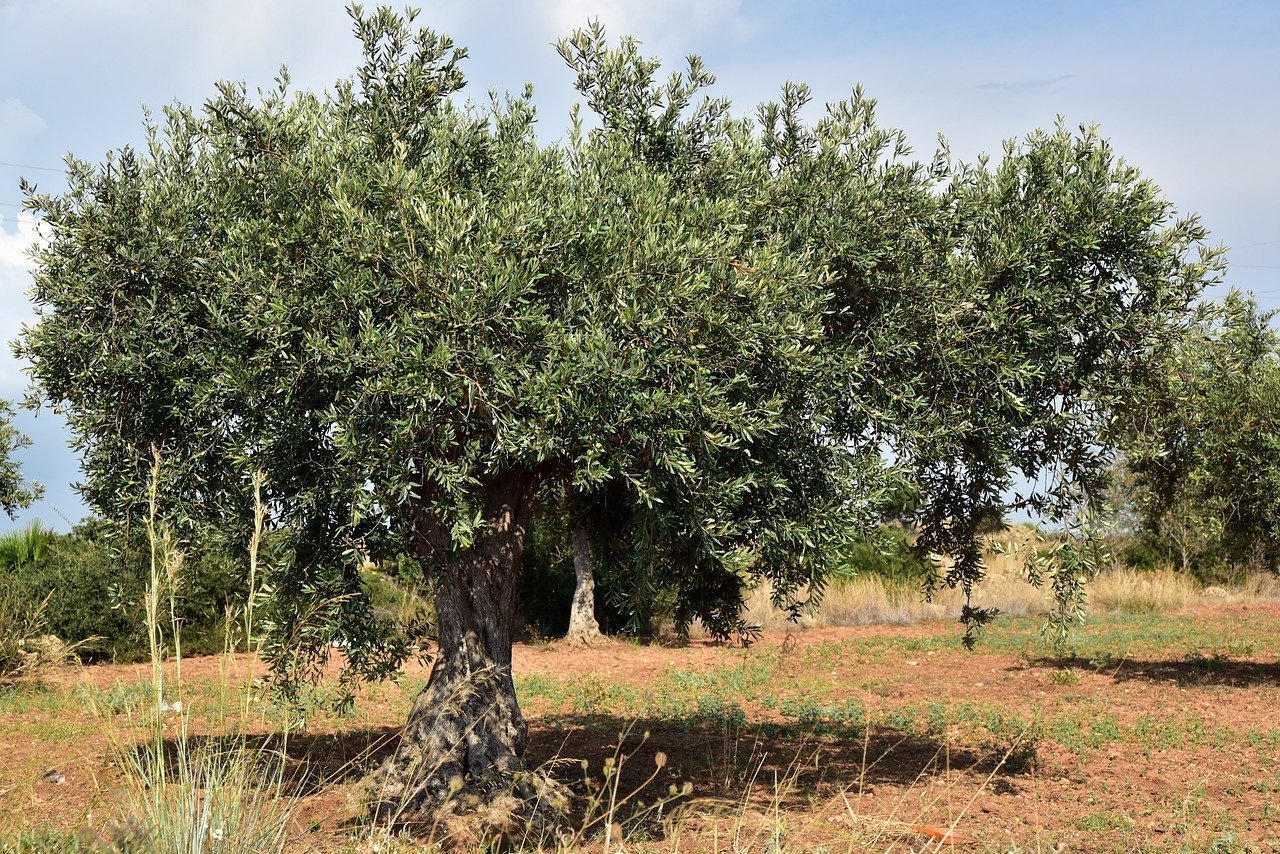
Focus on longer, slower delivery of water than mimics a long, light rainfall. Photo: Ulrike Leone
When it does rain, Mother Nature’s rainfall is primarily steady, slow, and spread out. Borrow this method to deliver a long, slow soaking. Trees prefer infrequent deep watering. Once a week or less for more established trees is sufficient.
Water in a slow drip away from the trunk, long enough to soak the top 12 inches of soil in the drip line. Use a hose on a very slow trickle, a soaker hose, drip irrigation in the proper areas, or this clever method.
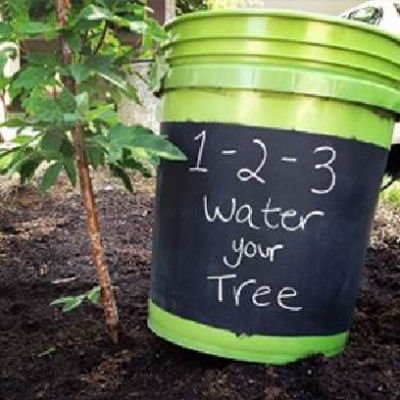
Use a five-gallon bucket with small holes to slowly release water to a tree’s deepest roots. Photo: Sacramento Tree Foundation
Use a five-gallon bucket and poke several holes in the bottom. Put the bucket on top of the soil along the drip line. Fill the bucket with water. The water will seep out slowly and deeply into the soil. When it’s empty, move the bucket about three feet away, and repeat the process. Do this until you have made a circle in the drip line around the tree.
You can fill the bucket with water gathered in your daily shower. In a household with several people, you may be able to fill a five-gallon bucket daily. Water early in the morning or after sunset, so you lose less water to evaporation. This is when trees gather moisture naturally.
If you have hard, rocky ground, drill holes one foot deep every three feet around the tree along the drip line. Fill the holes with compost, and then pour water into them. This vertical mulch will encourage the roots to grow.
Finally, bear in mind turf competes with your trees for water. Even if you want to retain some lawn, it’s smart to remove the lawn immediately around your trees and replace it with WaterSmart landscaping.

